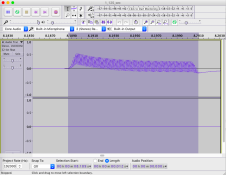snikulin
Member
How do they work?
Do they have any dependency on a potentially decaying-over-time element (master spring, escapement) or everything controlled purely by electronics?
In other words, can some old shutters be relied upon as a precise source of small time intervals without any CLA?
I know from my personal experience that older mechanical shutters can't be blindly trusted because of the possibly gummed escapement and/or weakened master spring. Any hope for Canon Elan II likes?
Basically I need a reliable and cheap source of small time intervals and though maybe an old "late" SLR for like $20 will do.
Yes, I know about gravity shutters. They are my plan "B" so far.
Thanks!
Do they have any dependency on a potentially decaying-over-time element (master spring, escapement) or everything controlled purely by electronics?
In other words, can some old shutters be relied upon as a precise source of small time intervals without any CLA?
I know from my personal experience that older mechanical shutters can't be blindly trusted because of the possibly gummed escapement and/or weakened master spring. Any hope for Canon Elan II likes?
Basically I need a reliable and cheap source of small time intervals and though maybe an old "late" SLR for like $20 will do.
Yes, I know about gravity shutters. They are my plan "B" so far.
Thanks!














